Check out the alphabetical list of dinosaur names beginning with the letter “A.” We’ll look at dinosaur pictures and discuss what their names mean, as well as learn more about dinosaur facts.
Dinosaurs with names that begin with the letter “A”
Abditosaurus
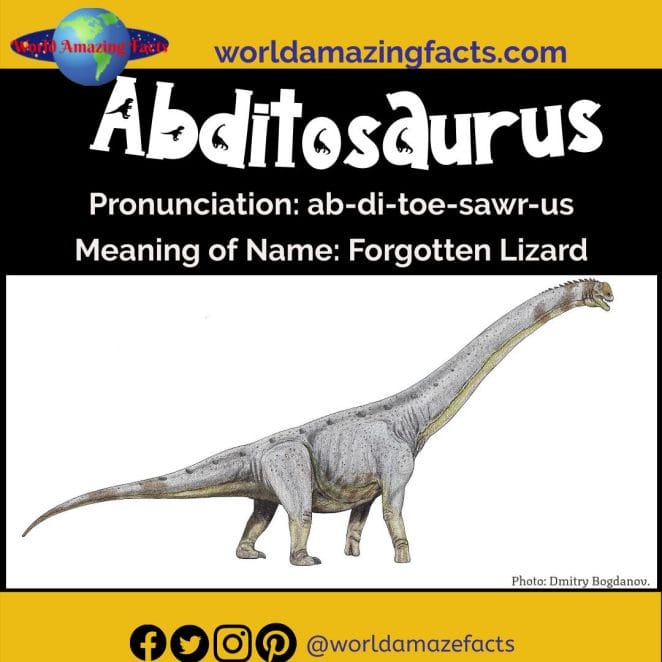
Abditosaurus was a sauropod that existed in what is now Spain during the Late Cretaceous period. Abditosaurus is reported to have measured 17.5 metres (57 feet) in length and weighed 14 tonnes (15 short tons). Bernata Vila and colleagues named and described it in 2022.
The name Abditosaurus is derived from the Latin word abditus, which means “abditus” (“hidden”). This is a reference to the fact that Abditosaurus’ remains were discovered in 1954 and then forgotten for the next 60 years. Prof. Walter Georg Kuehne, the holotype’s discoverer, is honoured with the genre epithet.
Abelisaurus
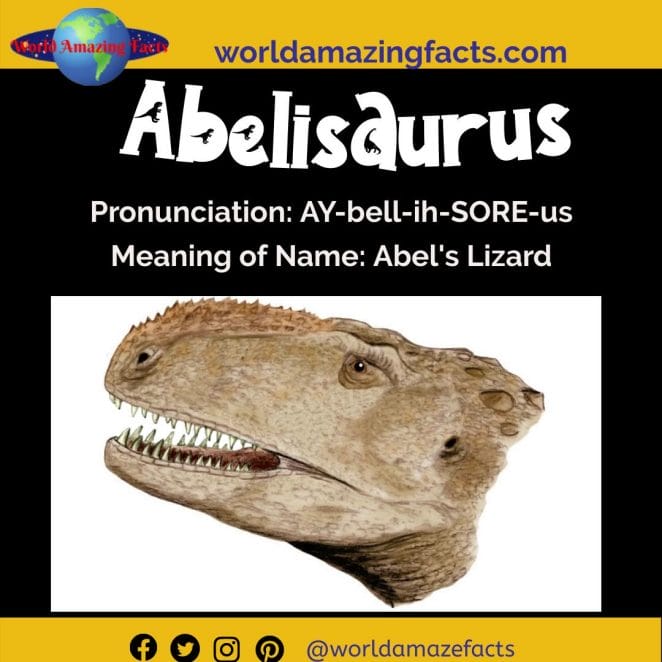
Abelisaurus was a predatory abelisaurid theropod dinosaur that lived in what is now South America during the Late Cretaceous Period (Campanian). Abelisaurus comahuensis means “Abel’s body from the Comahue region.”
The name recognises the membership – prof. Roberto Abela, director of the Museo de Cipolleti, where it is published as a holotype.
Abrictosaurus

Abrictosaurus was a tiny dinosaur that existed from the late Triassic to the early Jurassic. Abrictosaurus was discovered in South Africa’s Lesotho red sandstone.
Abrictosaurus (from the Greek (abriktos) meaning ‘wakeful’ and (sauros) meaning ‘lizard’) alludes to Hopson’s disagreement with Thulborn’s idea that heterodontosaurids hibernated during hot and/or dry seasons.
Abrosaurus
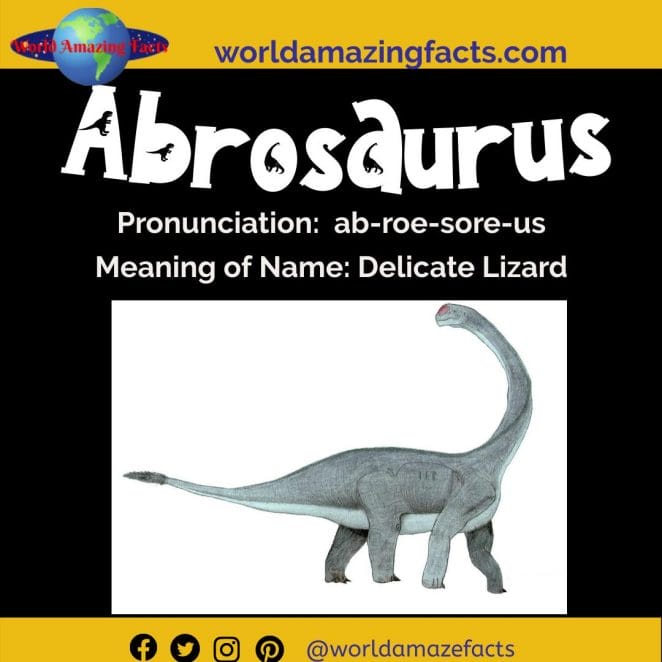
Abrosaurus is a macronarian sauropod dinosaur genus discovered at the Dashanpu Quarry in China’s Sichuan Province during the Middle Jurassic Period.
The generic name alludes to the structure of the skull, which consists of huge holes divided by thin bone struts. The sole identified species is A. dongpoi, which is named after the Sichuan-born poet Su Shi, also known as Su Dongpo, from the eleventh century.
Abydosaurus
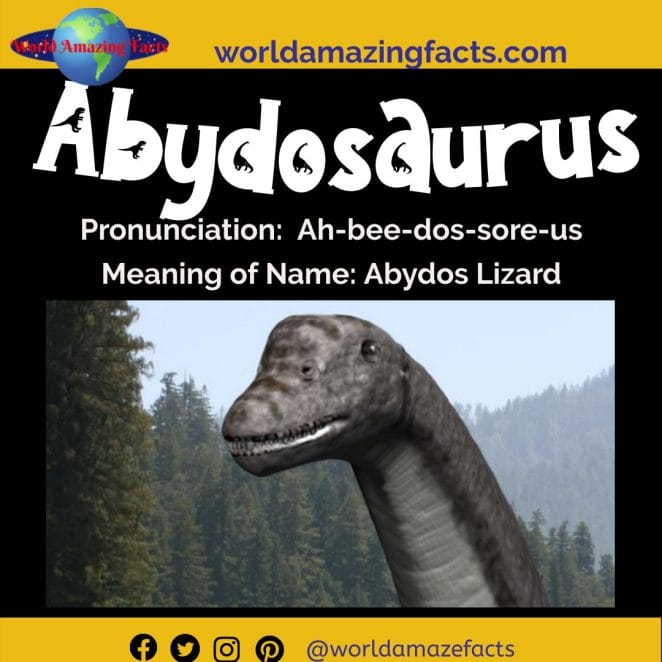
Abydosaurus was an Early Cretaceous brachiosaurid sauropod that lived in what is now Utah.
The generic name was formed by combining the Greek terms sauros (lizard) and Abydos – a Nile city (now El Araba el Madfuna) that was to be the burial location of Osiris – the Egyptian god of life, death, and fertility. This is a reference to the Abydosaurus holotype, the skull and neck of which were discovered in a quarry overlooking the Green River. The name recognises John “Jack” McIntosh for his contributions to the Dinosaur National Monument and sauropod study.
Acantholipan
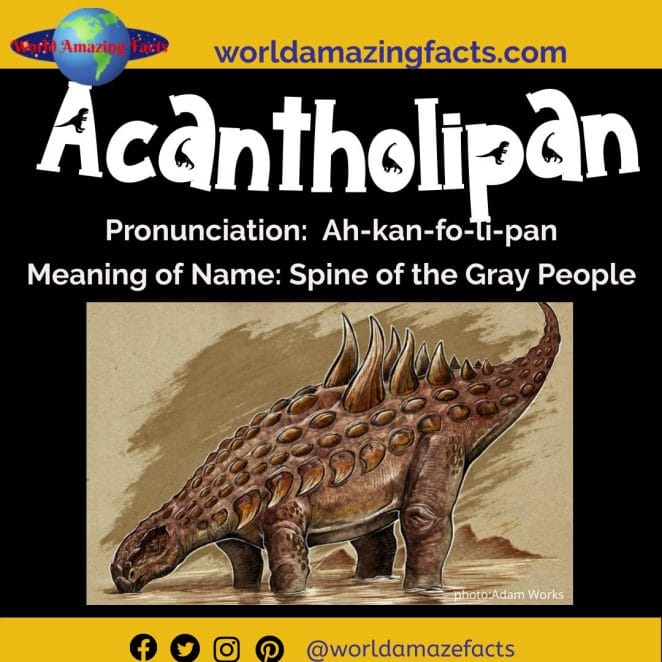
Acantholipan was a four-legged armoured herbivorous dinosaur that lived in North America during the Late Cretaceous period.
Acantholipan derives its name from the Greek term acanthus, which means “spike,” and the Spanish Lápai-Ndé, which refers to the Apache tribe who lived near the discovery location. Arturo H. Gonzalez González is honoured by the gonzalezi species epithet for his contributions to Mexican palaeontology.
Acanthopholis
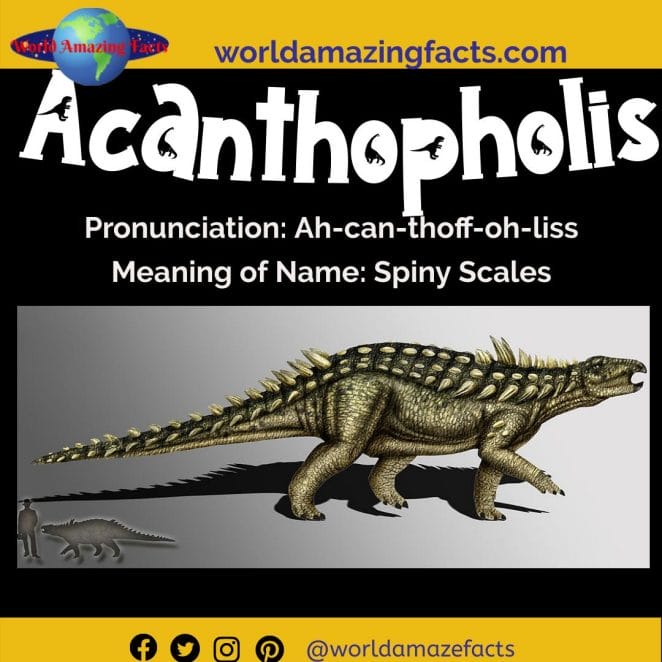
Acanthopholis was a medium-sized armoured dinosaur that lived in what is now England during the Late Cretaceous period.
Acanthopholis, which means ” spiny scales,” refers to the physical traits of this nodosaurid. The second element of a typical horror game’s genre name comes from Latin and meaning “spooky / rough” and was altered from the original horridus (“spooky / rugged”) by AS Woodward because the specimen discovered was intended to be female.
Achelousaurus
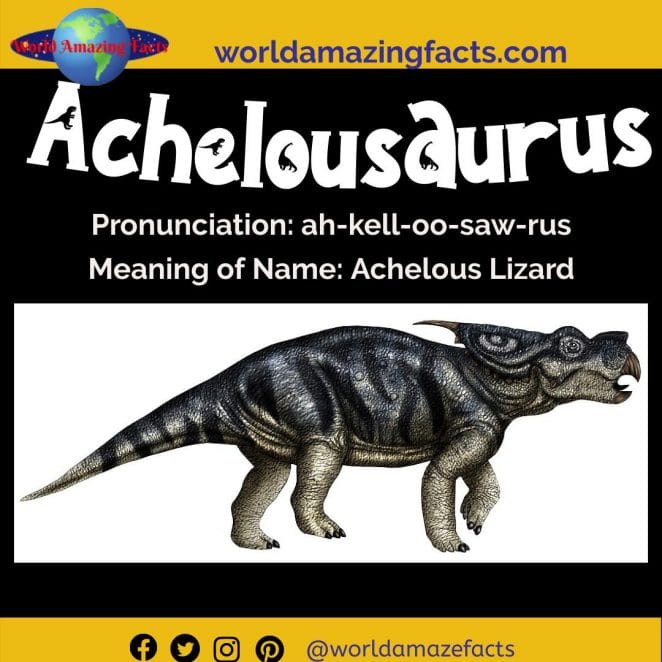
Achelousaurus is a type of ceratops from the Centrosaurinae family that lived in the late Cretaceous period in Montana, USA. It was a gigantic, herbivorous quadruped with a large head, a bone ruff, and long horns, like its relatives.
Scott Sampson named and described it in 1995. The generic name is derived from Acheloos, a Greek mythological character who can assume any shape. He adopted the form of a bull during his fight with Heracles, but he lost the duel, losing his horn in the process.
The term relates to the achelosaurus structure and the loss of horns throughout individual growth (loss of bone horns above the eyes) as well as phylogeny (no horn on the nose). Horneri is named after the eminent palaeontologist John Horner.
Acheroraptor
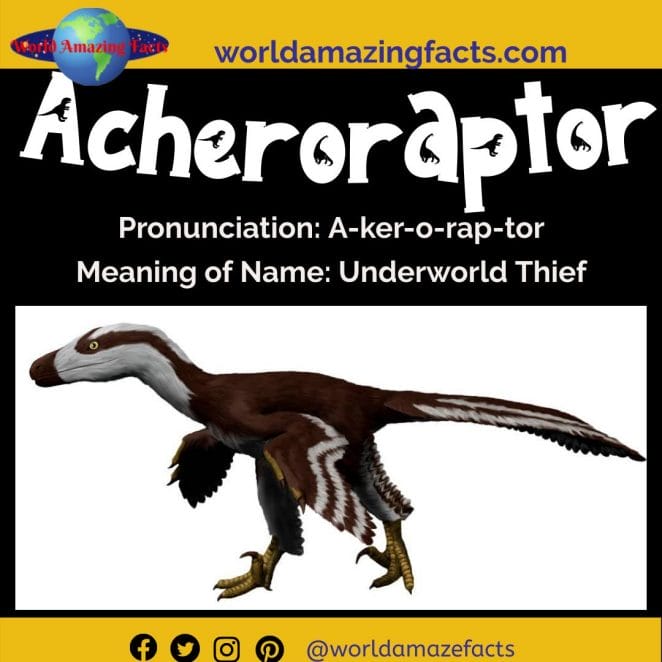
Acheroraptor was a late Mesozoic era medium-sized dromeosaurus. Acheroraptor fossils were discovered in Hell Creek Formation strata in Montana (Garfield County). Based on the recovered bone material, David C. Evans, Derek W. Larson, and Philip J. Currie created the description in 2013.
Acheroraptor is derived from the Greek word Acheron (Underground River of Sorrow in Greek mythology) to allude to the Hell Creek Formation and the Latin word raptor, which means “robber.” The temertyorum genre epithet honours James Temerty, president of the Northland Power and Royal Ontario Institution Boards of Governors, and his wife Louise Temerty, who provided financial assistance to the museum for many years.
Achillesaurus
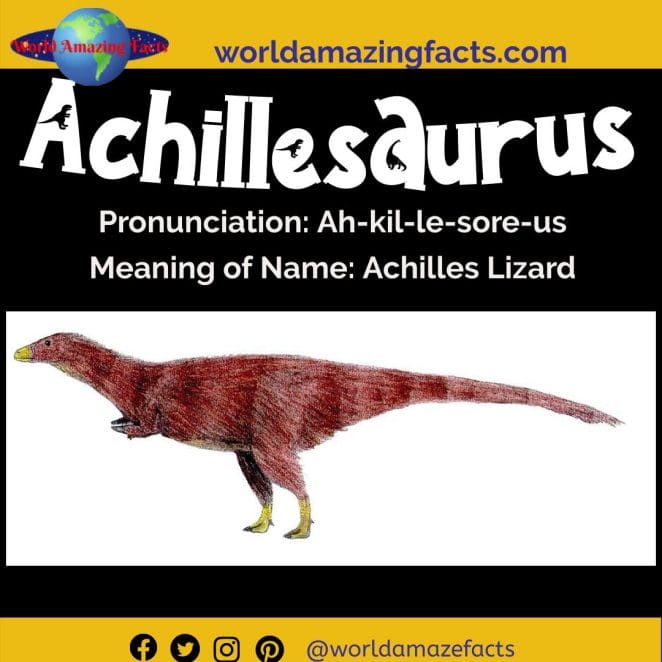
Achillesaurus is a genus of a small theropod of the Alvarezsauridae family, the fossils of which have been discovered in Argentina. Alvarezsaurus, which is known for the same rock formation, could be a junior synonym.
The name Achillesaurus relates to Homer’s mythical Achilles from the Iliad. Its weak point was the heel, and theropod was identified using structural traits of this region of the body. Rafael Manazonne, an amateur palaeontologist who supplied significant information on the location of the fossils in Patagonia and participated in the field work, is honoured by the species name.
Achillobator
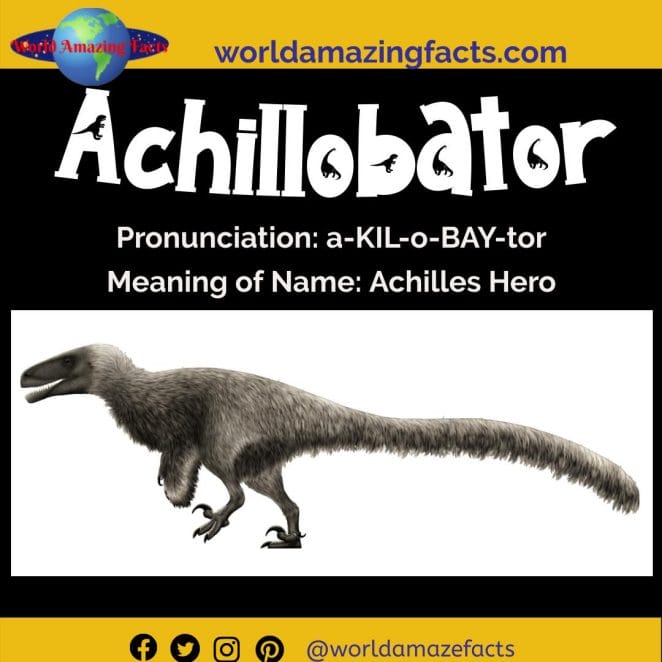
Achillobator was a big and enormous Late Cretaceous dromeosaurid that lived in Asia.
The name Achillobator giganticus refers to “the gigantic hero of Achilles” (a hero from Homer’s “Iliad”). In Mongolian, bator means “hero.”
Acristavus
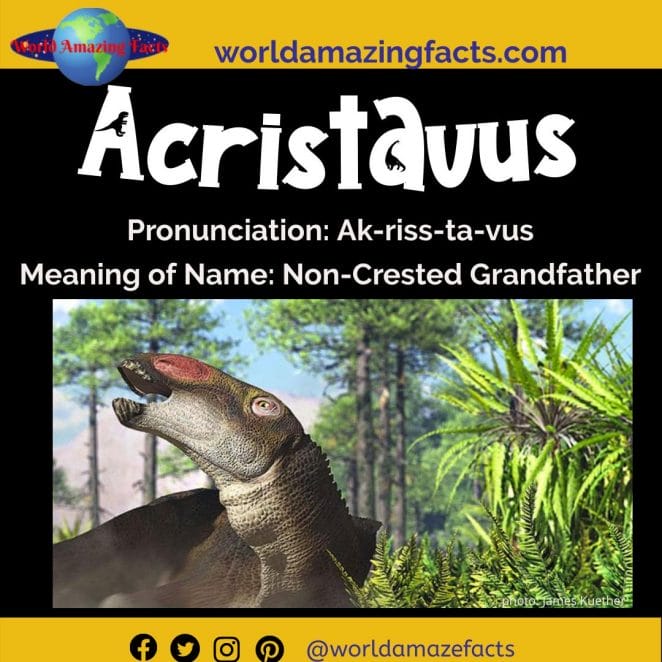
Acristavus was a medium-sized hadrosauride that existed in what is now the United States during the late Cretaceous period. Acristavus remains were recovered in two different locations: northern Montana and southern Utah. Acristavus’ skull, like those of its Saurolophinae lineage relatives, lacks lembeosaurin crests. Brachylophosaurus and Maiasaura were the Acristavus’ closest relatives.
The name Acristavus is derived from the Latin A (“without”), crist (“comb”), and avus (“grandfather”), and refers to the absence of cranial combs, the comparatively rudimentary shape of its skull, and its stratigraphic position (it is older than most relatives). The species name honours Gags Larson, the owner of the site where the dinosaur’s remains were discovered.
Acrocanthosaurus
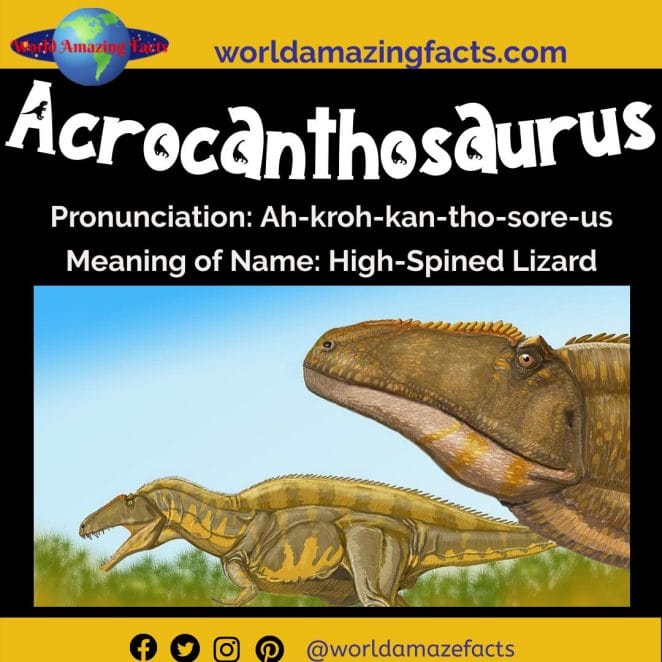
Acrocanthosaurus is a theropod genus of the Allosauroidea that lived in what is now North America during the Early Cretaceous epoch. Acrocanthosaurus, like other known dinosaur genera, has a single species, Acrocanthosaurus atokensis. Acrocanthosaurus fossils have been discovered largely in the American states of Oklahoma, Texas, and Wyoming, but Acrocanthosaurus teeth have also been discovered in the state of Maryland further east.
The name Acrocanthosaurus comes from the Greek words acra (“tall”), akantha (“spike”), and sauros, which refer to the spine’s tall spines (“lizard”). Acrocanthosaurus atokensis is the only species in the genus, named after Atoka County, Oklahoma, where the first remains were discovered.
Acrotholus
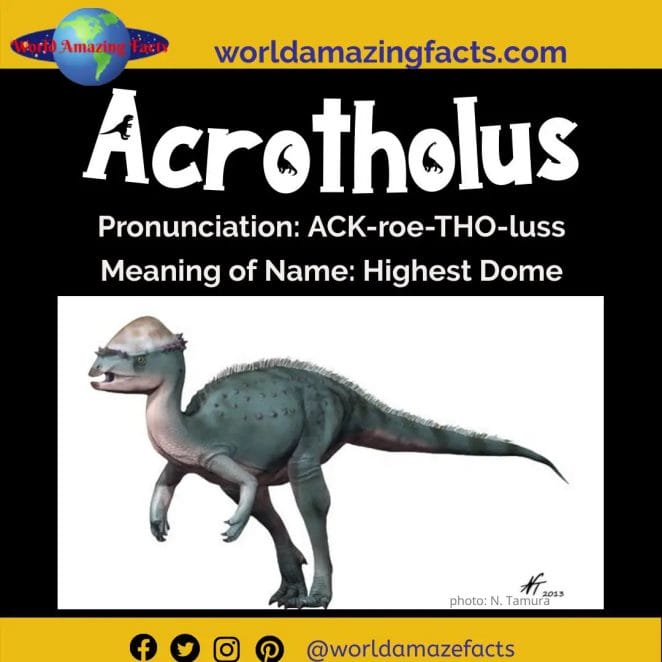
Acrotholus was a pachycephalosaurid that lived in North America during the late Cretaceous period. It is the earliest known representative of Pachycephalosauria, second only to Amtocephale.
Acrotholus is derived from the Greek words acros (highest) and thalos (dome). The thicker cerebral vault is referred to. The species name (audeti) honours Roy Audet, who allowed excavations to take place on his ranch (where the remains of the acrotole were also found).
Adamantisaurus
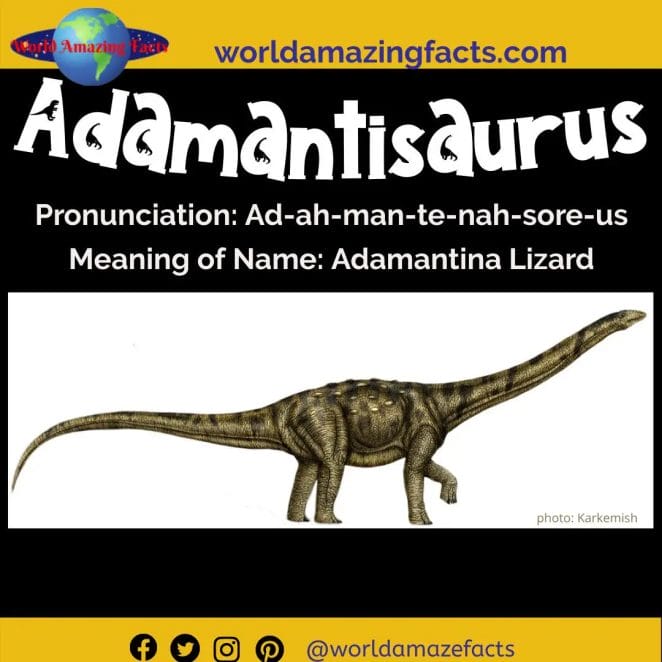
Adamantisaurus is a genus of medium-sized, poorly characterised sauropods from the Titanosauria group that existed in what is now Brazil during the Late Cretaceous period. Rodrigo Santucci and Reinaldo Bertini, two palaeontologists, named and characterised Adamantisaurus in 2006.
Adamantisaurus derives its name from the Adamantina rock formation, where its remains were discovered, and the Greek sauros (“reptile”, “lizard”). Dr. Sergio Mezzalir, who gathered the Adamantisaurus remains and first reported them in professional literature, is honoured with the genre moniker.
Adasaurus

Adasaurus was most likely a close relative of Velociraptor. Barsbold described Adasaurus in 1983 based on fossils discovered in what is now Mongolia. Adasaurus featured a short, razor-sharp, sickle-shaped claw on each foot, as befitting a dromeosaur, adapted to tear apart the flesh of a smaller victim.
Adasaurus mongoliensis translates as “Mongolian Ada lizard.” Ada is a Mongolian mythological evil spirit.
Adelolophus
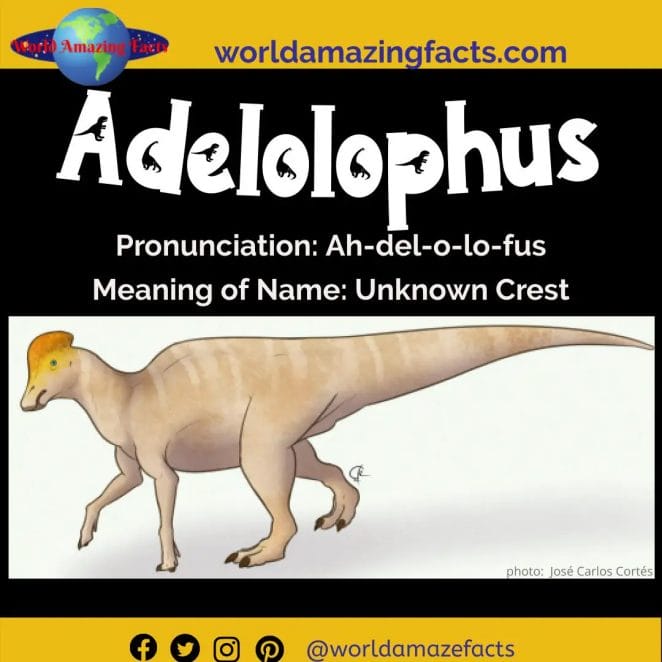
Adelolophus is a lambeosaurin genus from North America’s Late Cretaceous period. Although it is only known from one incomplete bone, it had a number of distinguishing characteristics that marked it apart from other dinosaurs. It is one of the earliest lambeosaurins discovered. Terry Gates and colleagues named and characterised Adelolophus in 2014.
Adelolophus is derived from the Greek words adelo (“unknown”) and lophos (“comb”). It relates to the fact that only a little portion of the animal’s skull has been discovered, hence it is unknown whether it had a crest like other lambeosaurins. Howard Hutchison, the discoverer of the holotype, is honoured by the genre’s name.
Adeopapposaurus
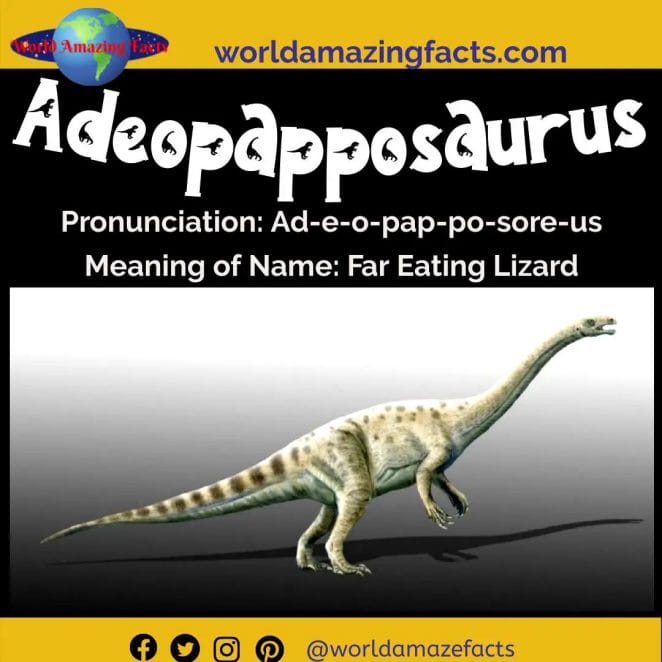
Adeopapposaurus was a sauropodomorph that lived in what is now west-central Argentina during the Early Jurassic period. Ricardo Martinez defined the genus in 2009 based on remnants recovered in the Cañón del Colorado Formation sediments, which had previously been attributed to the genus Massospondylus.
The name Adeopapposaurus is derived from the Latin words adeo, which means “far,” pappo, which means “eater” (the first two parts of the name refer to the newly identified taxon’s comparatively long neck), and saurus, which means “lizard.” The genre name relates to the Mogna area in Argentina’s San Juan Province.
Read also: A-Z list of Dinosaur Names and Pictures





GIPHY App Key not set. Please check settings